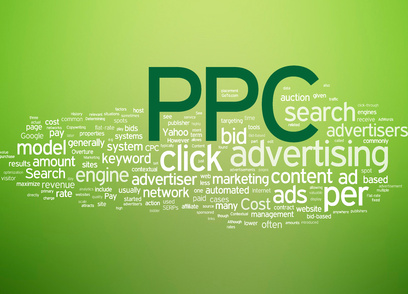Search advertising (also known as pay-per-click advertising, or PPC) is applauded by those in the digital world for its ability to both increase awareness and drive traffic to a website.
However, a PPC strategy can seem very overwhelming and confusing from the outset; but it’s worth working through because search advertising can be one of the most efficient uses of your marketing budget when done correctly.
This is especially true when you’re marketing a brand or item that is considered “high consideration.” This basically means that your brand (or the items your brand sells) requires more thought and and capital to purchase, such as cars, cameras, vacations, etc. For brands like this, there is a considerable amount of search involved in making the best decision. You don’t just pick a resort on a whim, you search the best locations, you search the best amenities, you search through reviews, and finally you make a decision.
Here are a few key things to consider when developing a search advertising campaign for high consideration brands:
1. Start with your ultimate goal (awareness vs. increasing traffic vs. lead generation, etc.). Yes, we know you hear this all the time. But it’s true. What is your goal? If your goal is to increase awareness about your brand in general, you may want to cast a wider net when it comes to keywords, focusing on mostly non-branded terms that don’t include your brand name. You’d also be more concerned with impression levels than you would be with clicks (seems counter-intuitive, we know!). However, if your goal is to drive traffic to your website, then it’s important to hone in on very specific keywords so that your ad relevance is higher, as is a user’s likelihood to click. Usually, a campaign’s goal is a mixture of both awareness and increased traffic, but if you can outline which is the most important , then you can allocate your budget more efficiently.
2. Figure out the “consideration-to-conversion” timeline. How long does it take your average customer to convert (purchase, provide email address, etc.)? When does she generally start looking? If for instance, you were marketing an undergraduate program, think about when high school seniors start receiving information about colleges at their high schools. Use this information as a guide when determining how and when to allocate your PPC budgets.
3. Determine which terms are already driving substantial amounts of traffic to your site. For example, if you’re using Google Analytics, look at the ‘Traffic Sources’ section for information about the types of keywords users have already searched to get to your site. Use these in determining which keywords to include in your campaign.
4. Start with non-branded keywords. About 83% of query paths begin with non-branded terms like “universities in North Carolina,” or “best journalism colleges.” Figure out which queries relate to your program and then portion the majority of your PPC budget to these keywords during the beginning phase of the user’s search journey (see #2).
5. Switch to more branded keywords once users are further down their search path. By the time a user is finally ready purchase something like a new digital camera or computer, she’s performed at least 10 search queries and has viewed 16 or more pages on your website. This type of high consideration calls for highly relevant ad keywords and messaging. Remember, this is the key to pulling people in, especially because 64.6 percent of people click on Google ads when searching highly valuable and branded keywords.
6. Use your data an optimize. Let the data guide you as you move forward with your campaigns. Each search campaign should be smarter and should perform better than the last (in terms of efficiency). For example, use the branded searches (ones specifically about your brand) to evaluate the geographies from which most of your prospective consumers come. Determine which search terms not only drive traffic to your site, but also the ones that are associated with high time spent on page averages and low bounce rates as these are the terms which deserve higher budgets.
7. Carefully craft your ads & landing pages. Remember the key to high CTR’s and high ad positions is your ad’s quality score. This means you MUST write ad copy that relates to the keyword the user is searching. The ad must also direct to a landing page that contains messaging relevant to the keyword. If you don’t, you run the risk of users not clicking on your ads and Google finding them irrelevant for users – Google will then assign higher CPC’s and lower ad positions.
8. Think Mobile. Because of its accessibility and convenience, more and more people are using their mobile devices to perform everyday searches. So make sure that your website is responsive, or that you’ve optimized your site for mobile (considering the “thumb effect” and page load time).
9. Think holistically and consider the user experience. Remember your goal when designing the entire process. If your goal is lead generation – make sure there’s a clear call to action, above the fold, on your landing page. If your goal is to get users to comb through your site, make sure it’s easy to navigate. Always think about the user’s process and make sure each step is easy to accomplish.
No matter if you’re marketing a professional-grade camera or a luxury resort, there are multiple things to consider when creating your search advertising strategy. What are some of your suggestions?
And if you’re interested in some help getting started with your PPC campaign, email me!
Photo Credit: us.fotolia.com


